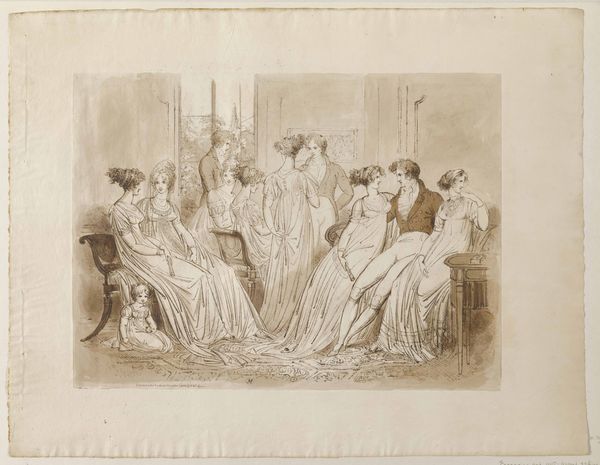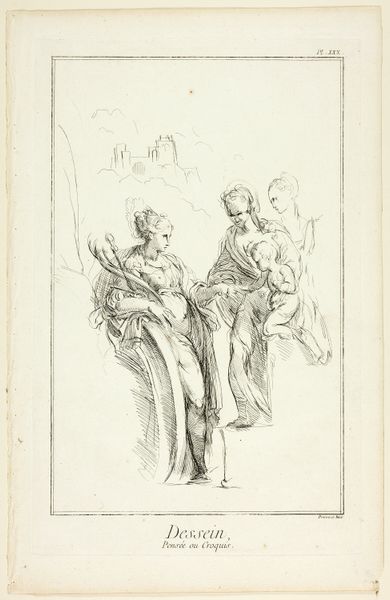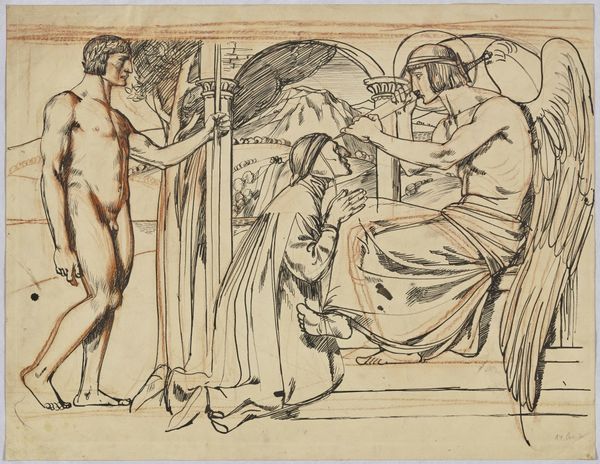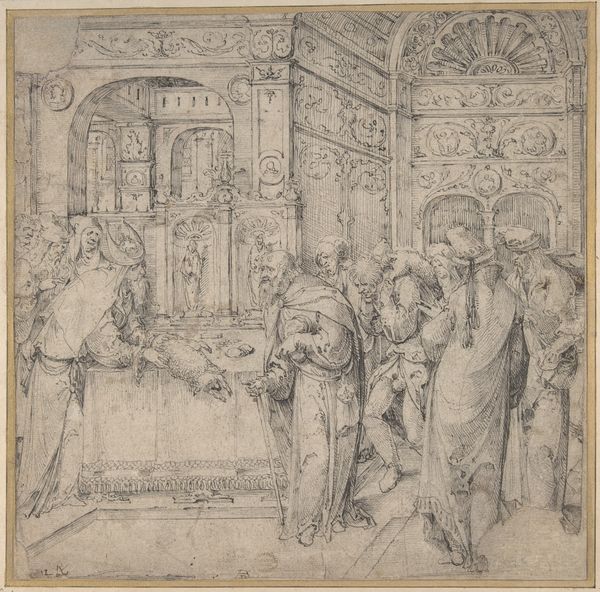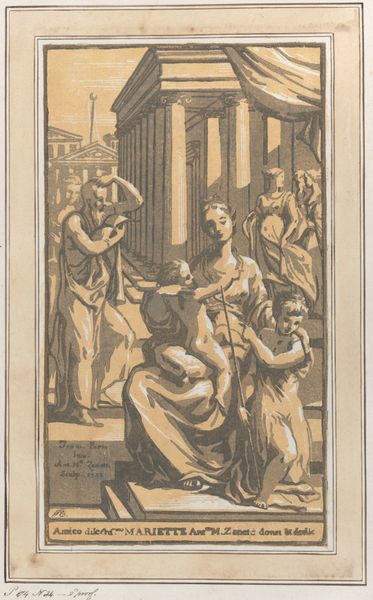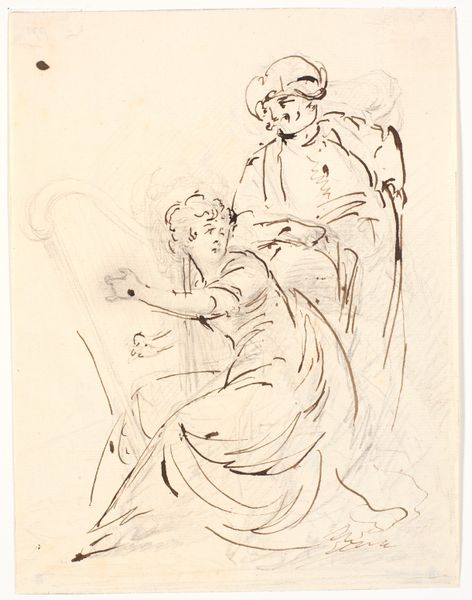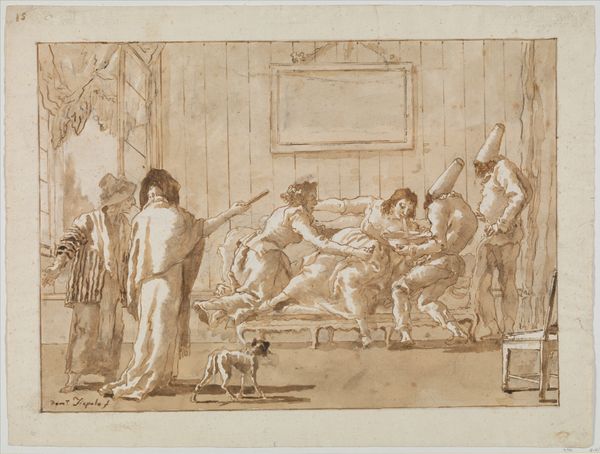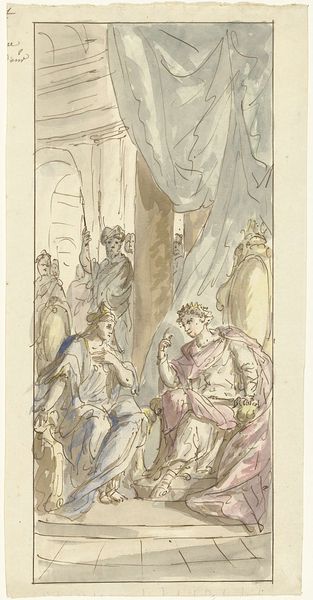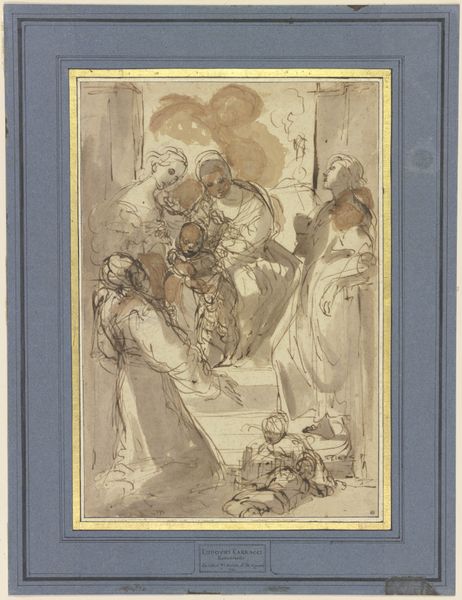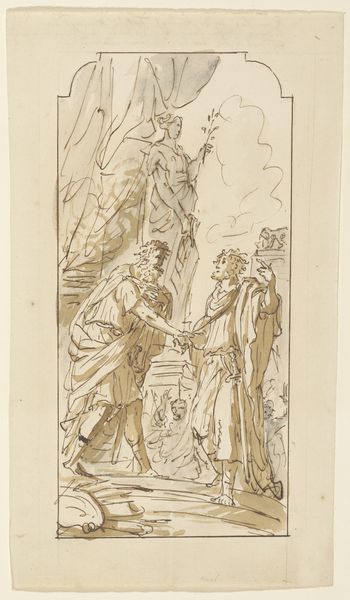
drawing, print
#
drawing
# print
#
figuration
#
11_renaissance
#
history-painting
#
italian-renaissance
Dimensions: sheet: 4 3/4 x 4 1/4 in. (12 x 10.8 cm)
Copyright: Public Domain
Bernardino Poccetti sketched 'The Visitation' using pen and brown ink with brown wash on laid paper sometime between 1548 and 1612. The Visitation, a subject frequently depicted in Italian Renaissance art, portrays the meeting of Mary and Elizabeth, both pregnant and carrying miraculous pregnancies. Poccetti's rendition offers a window into the social and religious climate of late 16th-century Italy. The Catholic Church, a significant patron of the arts, used such images to reinforce religious doctrine and promote piety among the faithful, especially during the Counter-Reformation. The setting, with its classical architectural elements, reflects the period's fascination with antiquity and underscores the sacred nature of the event. By examining Poccetti's artistic choices and the historical context in which he operated, we can gain insight into the complex interplay between art, religion, and society in Renaissance Italy. Further research into the patronage system and the artist's biography can shed light on his intentions and the broader cultural significance of the work.
Comments
No comments
Be the first to comment and join the conversation on the ultimate creative platform.
